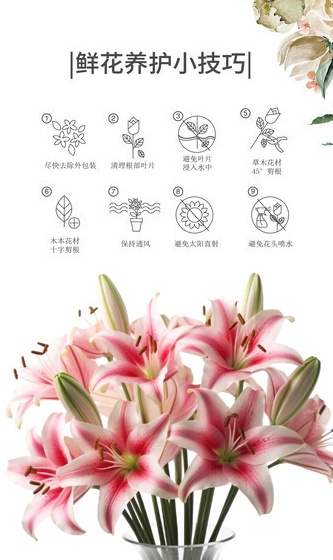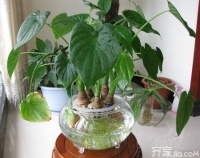Q
<h3>最早的生命是什么?</h3><h3>地球有46亿年的历史,自地球诞生以来,最早的生命是什么时候出现的呢?最早的生命又是什么样子的呢?这是任何一个人都会问到的问题。</h3><h3><br></h3><h3>其实,在地球诞生以来的46亿年中,大多数时候都是寂静无声的,没有动物、没有植物、更没有人类。随着时间流逝,地球的海洋中开始出现了简单的生命、开始出现的藻类、植物、简单的无脊椎动物、然后有了复杂的植物、脊椎动物、高级动物等。</h3><h3><br></h3><h3>科学家把地球没有动物的时间称为隐生宙,因为大多数生物出现在寒武纪早期,所以也统称为前寒武纪,这个时间大约占了40亿年。有动物的时间称为显生宙。显生宙的意思就是地球上有明显的生物出现。</h3><h3>大约6亿年的显生宙,又分为三个时期:分别为古生代、中生代、新生代。</h3> <p style="font-family: -webkit-standard; white-space: normal; -webkit-tap-highlight-color: rgba(26, 26, 26, 0.301961); -webkit-text-size-adjust: auto;">显生宙的英文:Phanerozonic</h3><p style="font-family: -webkit-standard; white-space: normal; -webkit-tap-highlight-color: rgba(26, 26, 26, 0.301961); -webkit-text-size-adjust: auto;">古生代-paleozoic 有3亿年,又分为6个阶段:</h3><p style="font-family: -webkit-standard; white-space: normal; -webkit-tap-highlight-color: rgba(26, 26, 26, 0.301961); -webkit-text-size-adjust: auto;">寒武纪-Cambrian (5.42-4.88亿年)代表动物为两侧对称、有坚硬外壳的三叶虫。</h3><p style="font-family: -webkit-standard; white-space: normal; -webkit-tap-highlight-color: rgba(26, 26, 26, 0.301961); -webkit-text-size-adjust: auto;">奥陶纪-Ordovician (4.88-4.44亿年)海洋中出现棘皮动物和珊瑚。</h3><p style="font-family: -webkit-standard; white-space: normal; -webkit-tap-highlight-color: rgba(26, 26, 26, 0.301961); -webkit-text-size-adjust: auto;">志留纪-Silurian (4.44-4.16亿年)原口动物(包括蜕皮动物和螺旋动物)出现,出现了蕨类植物和种子植物。</h3><p style="font-family: -webkit-standard; white-space: normal; -webkit-tap-highlight-color: rgba(26, 26, 26, 0.301961); -webkit-text-size-adjust: auto;">泥盆纪-Devonian (4.16-3.59亿年)脊椎动物称霸海洋,陆地上有了森林,鱼类演化成两栖类动物,它们开始在陆地上生存。</h3><p style="font-family: -webkit-standard; white-space: normal; -webkit-tap-highlight-color: rgba(26, 26, 26, 0.301961); -webkit-text-size-adjust: auto;">石炭纪-Carboniferous (3.59-2.99亿年)脊椎动物开始称霸地球,昆虫演化出飞行能力。森林生态系统普及。</h3><p style="font-family: -webkit-standard; white-space: normal; -webkit-tap-highlight-color: rgba(26, 26, 26, 0.301961); -webkit-text-size-adjust: auto;">二叠纪-Permian (2.99-2.51亿年)哺乳类动物的前身-羊膜动物和类爬行动物出现,裸子植物(相对于被子植物-开花植物)开始扩散。</h3> <h3>中生代-Mesozonic</h3><h3>三叠纪-Triassic (2.51-2亿年)伪鳄类(初级恐龙时代)动物出现,恐龙在2.3亿年前后出现。</h3><h3>侏罗纪-Jurassic (2-1.45亿年)这是恐龙的时代,鸟类在1.5亿年前出现。</h3><h3>白垩纪-Cretaceous (1.45亿年-6000万年)这是恐龙的盛世,开花植物也就是被子植物出现并扩散。</h3> <h3>新生代-cenozoic</h3><h3>古近纪-Paleogene( 6500万年-2300万年)哺乳类动物接管地球,开花的植物取代裸子植物。</h3><h3>新近纪-Neogene (2300万年-260万年)哺乳类动物统治地球,草原生态系统普及。</h3><h3>第四纪-Quatarnary (260万年至今)20万年前,现代人类出现。</h3> <h3>地球有46亿年历史,有明显生物存在的时间大约6亿年,这个时期称为显生元或者显生宙。那么在这之前是否就没有生物存在了?</h3><h3><br></h3><h3>在澳大利亚的鲨鱼湾考古学家发现了一种活的石头,它们是有活的微生物或者蓝绿菌(过去称为蓝绿藻)的单细胞生物,在表面生长,由于海水中的沉积物覆盖石化而形成石头,这种石头名叫叠层石(Stromatolite)。最早的叠层石有35亿年之久,这种蓝绿菌是单细胞原核生物,可以通过光合作用(phtosynthesis)获得能量,并且同时释放氧气,为显生宙的生物多样性造就了条件。</h3> <h3>单细胞藻类的分裂和粘连。Algea 藻类是最早的植物,4亿年前从海水中慢慢散布到淡水以及沼泽地,而走向陆地。</h3> <p style="font-family: -webkit-standard; white-space: normal; -webkit-tap-highlight-color: rgba(26, 26, 26, 0.301961); -webkit-text-size-adjust: auto;">最早的陆地植物-苔藓moss :4亿年前,植物开始在陆地生长。没有根、茎、叶、杆的区分,也没有花。</h3> <p style="font-family: -webkit-standard; white-space: normal; -webkit-tap-highlight-color: rgba(26, 26, 26, 0.301961); -webkit-text-size-adjust: auto;">古生物学家(paleontologist)称这种8米高的原杉藻(Prototaxites) 为巨型真菌(gigantic fungus)。地球上曾经满是这种植物,它们产生氧气、释放到大气层中。</h3> <p style="font-family: -webkit-standard; white-space: normal; -webkit-tap-highlight-color: rgba(26, 26, 26, 0.301961); -webkit-text-size-adjust: auto;">早期的树是这种蕨类(cooksonia ):只有4厘米高, 树干可以产水,并且运输到树稍。这些蕨类在4亿年前产生,而且慢慢长高且蔓延到各地。</h3> <p style="font-family: -webkit-standard; white-space: normal; -webkit-tap-highlight-color: rgba(26, 26, 26, 0.301961); -webkit-text-size-adjust: auto;">如果在放大镜下仔细观看:顶囊蕨 cooksonia: 这种植物具有水生成细胞 water-conducting cells, 它们在4亿年前就出现了(425 million years ago)。</h3> <p style="font-family: -webkit-standard; white-space: normal; -webkit-tap-highlight-color: rgba(26, 26, 26, 0.301961); -webkit-text-size-adjust: auto;">恐龙时代的植物(Plants):蕨类 (fern)针叶树(conifer)。苏铁树(Williamsonia )有类似开花的组分。</h3> <h3>蕨类植物的树干和树叶</h3> <p style="font-family: -webkit-standard; white-space: normal; -webkit-tap-highlight-color: rgba(26, 26, 26, 0.301961); -webkit-text-size-adjust: auto;">什么时候树上结果实:1.25亿年;</h3><p style="font-family: -webkit-standard; white-space: normal; -webkit-tap-highlight-color: rgba(26, 26, 26, 0.301961); -webkit-text-size-adjust: auto;"><span style="-webkit-tap-highlight-color: rgba(26, 26, 26, 0.301961);">最早有果实的树;古果树。</span><br></h3><p style="font-family: -webkit-standard; white-space: normal; -webkit-tap-highlight-color: rgba(26, 26, 26, 0.301961); -webkit-text-size-adjust: auto;"><span style="-webkit-tap-highlight-color: rgba(26, 26, 26, 0.301961);"><br></span></h3><p style="font-family: -webkit-standard; white-space: normal; -webkit-tap-highlight-color: rgba(26, 26, 26, 0.301961); -webkit-text-size-adjust: auto;">什么时候植物有花:恐龙时代 。<span style="-webkit-tap-highlight-color: rgba(26, 26, 26, 0.301961);"><br></span></h3><p style="font-family: -webkit-standard; white-space: normal; -webkit-tap-highlight-color: rgba(26, 26, 26, 0.301961); -webkit-text-size-adjust: auto;"></h3><p style="font-family: -webkit-standard; white-space: normal; -webkit-tap-highlight-color: rgba(26, 26, 26, 0.301961); -webkit-text-size-adjust: auto;">最早开花的树:玉兰花。</h3> <p style="font-family: -webkit-standard; white-space: normal; -webkit-tap-highlight-color: rgba(26, 26, 26, 0.301961); -webkit-text-size-adjust: auto;">什么时候地球上有草:2000万年前(20million years )才开始有草:草也是开花的植物,花粉随风飘扬。</h3> <h3>现代的树木</h3> <p style="font-family: -webkit-standard; white-space: normal; -webkit-tap-highlight-color: rgba(26, 26, 26, 0.301961); -webkit-text-size-adjust: auto;">最早的动物是什么?</h3><p style="font-family: -webkit-standard; white-space: normal; -webkit-tap-highlight-color: rgba(26, 26, 26, 0.301961); -webkit-text-size-adjust: auto;">水母(腔肠动物/刺胞动物)和蠕虫,在<span style="-webkit-tap-highlight-color: rgba(26, 26, 26, 0.301961);">5-6亿年前就出现了。</span></h3> <h3>蠕虫</h3> <h3>最早的动物是无脊椎动物 invertebrates:</h3><p style="font-family: -webkit-standard; white-space: normal; -webkit-tap-highlight-color: rgba(26, 26, 26, 0.301961); -webkit-text-size-adjust: auto;">•无脊椎动物顾名思义即没有脊柱、也没有内部骨架的动物。无脊椎动物占动物总数的90%。 包括昆虫、蜘蛛、软体动物、海绵、海蜇和蠕虫。</h3><p style="font-family: -webkit-standard; white-space: normal; -webkit-tap-highlight-color: rgba(26, 26, 26, 0.301961); -webkit-text-size-adjust: auto;">Invertebrates are the animals that have neither a backbone nor a bony internal skeleton. This is an incredibly varied group; it includes insects, spiders, mollusks, sponges, jellyfish, and worms.</h3><p style="font-family: -webkit-standard; white-space: normal; -webkit-tap-highlight-color: rgba(26, 26, 26, 0.301961); -webkit-text-size-adjust: auto;"><br></h3><p style="font-family: -webkit-standard; white-space: normal; -webkit-tap-highlight-color: rgba(26, 26, 26, 0.301961); -webkit-text-size-adjust: auto;">归纳整理一下无脊椎动物的分类,包括海绵等多孔动物、海星海胆等棘皮动物、珊瑚和水母等刺胞动物/腔肠动物、蚯蚓水蛭等环节动物、软体动物,和节肢动物。</h3> <p style="font-family: -webkit-standard; white-space: normal; -webkit-tap-highlight-color: rgba(26, 26, 26, 0.301961); -webkit-text-size-adjust: auto;">Porifera 多孔动物:<span style="-webkit-tap-highlight-color: rgba(26, 26, 26, 0.301961);">sponge /海绵。</span><span style="-webkit-tap-highlight-color: rgba(26, 26, 26, 0.301961);">海绵没有消化、神经系统,海水通过身体吸收养分并排出废物。</span></h3> <h3>象耳海绵可以高达1米,而且还能继续生长。</h3> <h3>棘皮动物(Echinodermata)</h3><h3><br></h3><p style="font-family: -webkit-standard; white-space: normal; -webkit-tap-highlight-color: rgba(26, 26, 26, 0.301961); -webkit-text-size-adjust: auto;">这种海生动物具有五角对称的步管结构,水管系统和管足。</h3><p style="font-family: -webkit-standard; white-space: normal; -webkit-tap-highlight-color: rgba(26, 26, 26, 0.301961); -webkit-text-size-adjust: auto;">例如:海星sea star、海胆 sea urchin、海参 sea cucumber。</h3> <h3>刺胞动物(Cnidaria):</h3><h3><span style="font-family: -webkit-standard; white-space: normal; -webkit-tap-highlight-color: rgba(26, 26, 26, 0.301961); -webkit-text-size-adjust: auto;">这类动物包括:</span><span style="font-family: -webkit-standard; white-space: normal; -webkit-tap-highlight-color: rgba(26, 26, 26, 0.301961); -webkit-text-size-adjust: auto;">水母 jelly-fish、</span><span style="font-family: -webkit-standard; white-space: normal; -webkit-tap-highlight-color: rgba(26, 26, 26, 0.301961); -webkit-text-size-adjust: auto;">珊瑚 coral、</span><span style="font-family: -webkit-standard; white-space: normal; -webkit-tap-highlight-color: rgba(26, 26, 26, 0.301961); -webkit-text-size-adjust: auto;">海葵等</span></h3><p style="font-family: -webkit-standard; white-space: normal; -webkit-tap-highlight-color: rgba(26, 26, 26, 0.301961); -webkit-text-size-adjust: auto;">有两层细胞组成:表皮层和肠表皮层。口也是肛门,所以也叫腔肠动物。</h3> <p style="font-family: -webkit-standard; white-space: normal; -webkit-tap-highlight-color: rgba(26, 26, 26, 0.301961); -webkit-text-size-adjust: auto;">Annelida: <span style="-webkit-tap-highlight-color: rgba(26, 26, 26, 0.301961);">环节动物 </span></h3><p style="font-family: -webkit-standard; white-space: normal; -webkit-tap-highlight-color: rgba(26, 26, 26, 0.301961); -webkit-text-size-adjust: auto;"><span style="-webkit-tap-highlight-color: rgba(26, 26, 26, 0.301961);">一般两侧对称、身体由很多环节组成、没有骨骼、有心脏、有消化系统、腹面带有刚毛。</span></h3><p style="font-family: -webkit-standard; white-space: normal; -webkit-tap-highlight-color: rgba(26, 26, 26, 0.301961); -webkit-text-size-adjust: auto;">包括:蚯蚓 earth worm 和<span style="-webkit-tap-highlight-color: rgba(26, 26, 26, 0.301961);">水蛭leech。</span></h3> <p style="font-family: -webkit-standard; white-space: normal; -webkit-tap-highlight-color: rgba(26, 26, 26, 0.301961); -webkit-text-size-adjust: auto;">Mollusca:<span style="-webkit-tap-highlight-color: rgba(26, 26, 26, 0.301961);">软体动物</span></h3><p style="font-family: -webkit-standard; white-space: normal; -webkit-tap-highlight-color: rgba(26, 26, 26, 0.301961); -webkit-text-size-adjust: auto;">包括一下各种动物:</h3><p style="font-family: -webkit-standard; white-space: normal; -webkit-tap-highlight-color: rgba(26, 26, 26, 0.301961); -webkit-text-size-adjust: auto;">squid:乌贼</h3><p style="font-family: -webkit-standard; white-space: normal; -webkit-tap-highlight-color: rgba(26, 26, 26, 0.301961); -webkit-text-size-adjust: auto;">Nudibranch:裸鳃</h3><p style="font-family: -webkit-standard; white-space: normal; -webkit-tap-highlight-color: rgba(26, 26, 26, 0.301961); -webkit-text-size-adjust: auto;">snial:蜗牛等</h3><p style="font-family: -webkit-standard; white-space: normal; -webkit-tap-highlight-color: rgba(26, 26, 26, 0.301961); -webkit-text-size-adjust: auto;"><br></h3><p style="font-family: -webkit-standard; white-space: normal; -webkit-tap-highlight-color: rgba(26, 26, 26, 0.301961); -webkit-text-size-adjust: auto;">蚌类(sea shell)、海螺、章鱼等,超过 10万余种。</h3><p style="font-family: -webkit-standard; white-space: normal; -webkit-tap-highlight-color: rgba(26, 26, 26, 0.301961); -webkit-text-size-adjust: auto;">软体动物多体软无骨骼,身体分头、多足、内脏和外套膜,多数有硬壳。<span style="-webkit-tap-highlight-color: rgba(26, 26, 26, 0.301961);">软体动物靠肉脚伸出收缩运动。</span></h3> <h3><br></h3><p style="font-family: -webkit-standard; white-space: normal; -webkit-tap-highlight-color: rgba(26, 26, 26, 0.301961); -webkit-text-size-adjust: auto;">Arthropoda: <span style="-webkit-tap-highlight-color: rgba(26, 26, 26, 0.301961);">节肢动物包括:</span></h3><p style="font-family: -webkit-standard; white-space: normal; -webkit-tap-highlight-color: rgba(26, 26, 26, 0.301961); -webkit-text-size-adjust: auto;">Myriapods:<span style="-webkit-tap-highlight-color: rgba(26, 26, 26, 0.301961);">多足虫纲</span></h3><p style="font-family: -webkit-standard; white-space: normal; -webkit-tap-highlight-color: rgba(26, 26, 26, 0.301961); -webkit-text-size-adjust: auto;">这类节肢动物大约有1.6万种之多。多足虫的腿从10 条到750条。</h3><p style="font-family: -webkit-standard; white-space: normal; -webkit-tap-highlight-color: rgba(26, 26, 26, 0.301961); -webkit-text-size-adjust: auto;">其他节肢动物还包括:</h3><p style="font-family: -webkit-standard; white-space: normal; -webkit-tap-highlight-color: rgba(26, 26, 26, 0.301961); -webkit-text-size-adjust: auto;">蜈蚣:garden centipede</h3><p style="font-family: -webkit-standard; white-space: normal; -webkit-tap-highlight-color: rgba(26, 26, 26, 0.301961); -webkit-text-size-adjust: auto;">马陆:millipede</h3><p style="font-family: -webkit-standard; white-space: normal; -webkit-tap-highlight-color: rgba(26, 26, 26, 0.301961); -webkit-text-size-adjust: auto;">蝎子:scorpion</h3><p style="font-family: -webkit-standard; white-space: normal; -webkit-tap-highlight-color: rgba(26, 26, 26, 0.301961); -webkit-text-size-adjust: auto;">节肢动物的共同特点是身体有多节,头部有触角,腹部有多足。它们多数吃腐烂的树叶或嫩叶、根维持生命。</h3> <h3>上边归纳总结一下无脊椎动物的分类和特点。下边给大家介绍一下从古生物化石看到的远古无脊椎动物。</h3> <p style="font-family: -webkit-standard; white-space: normal; -webkit-tap-highlight-color: rgba(26, 26, 26, 0.301961); -webkit-text-size-adjust: auto;">最早的生命:起源于6亿(600 millions)年前,属于前寒武纪的生物,<span style="-webkit-tap-highlight-color: rgba(26, 26, 26, 0.301961);">它们生活在黑暗的海底,机体柔软像树叶,没有头、腿、嘴、内脏。图片中显示的是一种蠕虫叫做</span><span style="-webkit-tap-highlight-color: rgba(26, 26, 26, 0.301961);">加尼亚虫(Charnia),生活在5.8亿年前,加尼亚蠕虫化石可在世界广泛发现,包括澳大利亚、加拿大、俄国。</span></h3> <h3>前寒武纪的生物多数为简单的蠕虫和水母。</h3> <h3>而在寒武纪,大约5.3亿年开始很多新的海洋生物出现,这些新生物有腿、有头、有感觉器官,这些千奇百怪的动物集中在寒武纪出现,所以科学家称这种神秘的生命大发展为寒武纪生命大爆发。</h3><h3><br></h3><h3>那么科学家又是如何发现寒武纪生命大爆发?</h3><h3><br></h3><h3><br></h3> <p style="font-family: -webkit-standard; white-space: normal; -webkit-tap-highlight-color: rgba(26, 26, 26, 0.301961); -webkit-text-size-adjust: auto;">•美国古生物学家查尔斯 沃尔科特在加拿大度假时发现了当地的黑色页岩,岩石中有成千种化石。从那以后,他每年都来挖掘化石。收集了65000多种化石。</h3><p style="font-family: -webkit-standard; white-space: normal; -webkit-tap-highlight-color: rgba(26, 26, 26, 0.301961); -webkit-text-size-adjust: auto;">•页岩层有160米厚,在一个悬崖之下,地层据说有5亿年,很多种软体动物,硬壳的动物只占很少一部分(14%)。这些黑色页岩也叫<span style="-webkit-tap-highlight-color: rgba(26, 26, 26, 0.301961);">伯吉斯页岩,多数位于加拿大西北部的落基山脉的幽鹤国家公园。 </span></h3><p style="font-family: -webkit-standard; white-space: normal; -webkit-tap-highlight-color: rgba(26, 26, 26, 0.301961); -webkit-text-size-adjust: auto;">这里蕴藏着大量的5亿年前的化石,特别是软体动物的化石。Burgess Shale at Yoho National Park Canada </h3><p style="font-family: -webkit-standard; white-space: normal; -webkit-tap-highlight-color: rgba(26, 26, 26, 0.301961); -webkit-text-size-adjust: auto;">505 million years old fossil-bearing deposit at Canadian Rockies mountain</h3><p style="font-family: -webkit-standard; white-space: normal; -webkit-tap-highlight-color: rgba(26, 26, 26, 0.301961); -webkit-text-size-adjust: auto;"><br></h3> <h3>我们介绍几种寒武纪生命大爆发中有代表性的动物:</h3><h3><br></h3><p style="font-family: -webkit-standard; white-space: normal; -webkit-tap-highlight-color: rgba(26, 26, 26, 0.301961); -webkit-text-size-adjust: auto;">奇虾:Anomalocaris</h3><p style="font-family: -webkit-standard; white-space: normal; -webkit-tap-highlight-color: rgba(26, 26, 26, 0.301961); -webkit-text-size-adjust: auto;"><span style="-webkit-tap-highlight-color: rgba(26, 26, 26, 0.301961);">奇虾身体扁平、有头、有尾、有复眼、能游泳,体长达一米,属于节肢动物。最早发现于5亿年前(</span><span style="-webkit-tap-highlight-color: rgba(26, 26, 26, 0.301961);">505 million years ago), 化石广泛于加拿大和中国(Canada and South China)。</span></h3><p style="font-family: -webkit-standard; white-space: normal; -webkit-tap-highlight-color: rgba(26, 26, 26, 0.301961); -webkit-text-size-adjust: auto;"><br></h3><p style="font-family: -webkit-standard; white-space: normal; -webkit-tap-highlight-color: rgba(26, 26, 26, 0.301961); -webkit-text-size-adjust: auto;"><br></h3> <h3>这是奇虾的化石。</h3> <h3>根据奇虾化石的复原图。</h3> <h3>澳洲堪培拉国立博物馆中的奇虾模型。</h3> <h3>奇虾大小与成年男子的比例。</h3> <p style="font-family: -webkit-standard; white-space: normal; -webkit-tap-highlight-color: rgba(26, 26, 26, 0.301961); -webkit-text-size-adjust: auto;">怪诞虫:Hallucigenia </h3><p style="font-family: -webkit-standard; white-space: normal; -webkit-tap-highlight-color: rgba(26, 26, 26, 0.301961); -webkit-text-size-adjust: auto;">寒武纪时有很多非常奇怪的动物,这种动物有头没有嘴和眼睛,身上长满了触角样的腿。<span style="-webkit-tap-highlight-color: rgba(26, 26, 26, 0.301961);">因为太奇怪了,让人产生幻觉,所以叫幻觉虫-怪诞虫。</span></h3> <h3>这是怪诞虫的化石。</h3> <h3>这是根据化石复原的怪诞虫。</h3> <p style="font-family: -webkit-standard; white-space: normal; -webkit-tap-highlight-color: rgba(26, 26, 26, 0.301961); -webkit-text-size-adjust: auto;">这是欧巴宾海蝎:Opabinia </h3><p style="font-family: -webkit-standard; white-space: normal; -webkit-tap-highlight-color: rgba(26, 26, 26, 0.301961); -webkit-text-size-adjust: auto;">欧巴宾海蟹蝎有五只复眼,一只长长的钳子。</h3> <h3>欧巴斌蝎子的复原图。</h3> <h3>在中国云南省澄江县帽甜山也有类似寒武纪生命大爆发的化石岩层:请看下图为澄江生物群的复原图。</h3> <h3>大约2.5亿年前,古海河底淤泥中到处都是这种节肢动物:三叶虫 trilobites。</h3> <p style="font-family: -webkit-standard; white-space: normal; -webkit-tap-highlight-color: rgba(26, 26, 26, 0.301961); -webkit-text-size-adjust: auto;">它们身体分三节:头、胸、尾部。复眼很大,硬壳保护身体免受外界伤害。</h3><p style="font-family: -webkit-standard; white-space: normal; -webkit-tap-highlight-color: rgba(26, 26, 26, 0.301961); -webkit-text-size-adjust: auto;"><span style="-webkit-tap-highlight-color: rgba(26, 26, 26, 0.301961);">三叶虫是节肢动物的祖先,1.7万多种三叶虫。个体一般很小只有几个厘米。</span><br></h3><p style="font-family: -webkit-standard; white-space: normal; -webkit-tap-highlight-color: rgba(26, 26, 26, 0.301961); -webkit-text-size-adjust: auto;">它们在5亿年前出现,到2亿年左右集体消失。曾经生活在浅海海底,吃海底泥中的更小的生物。三叶虫的化石可以和恐龙化石一样知名和媲美。</h3> <h3>最有名的三叶虫就是新月盾虫selenopeltis。相对其他三叶虫,新月盾虫的复眼比较小,但是个体比较大,可以长到手掌大小,大约12厘米。</h3> <h3>棘皮动物Echinoderms 在寒武纪生命大爆发中更是多见:海星、海胆、海百合等,共有2万多种。</h3><h3><br></h3><h3><br></h3> <p style="font-family: -webkit-standard; white-space: normal; -webkit-tap-highlight-color: rgba(26, 26, 26, 0.301961); -webkit-text-size-adjust: auto;">和三叶草关系密切的节肢动物的鳌肢亚门,<span style="-webkit-tap-highlight-color: rgba(26, 26, 26, 0.301961);">共有8万余种不同的动物,4.5亿年前即已出现, 鳌肢亚门的动物包括:蝎子、蜘蛛、螨虫和鲎(发音:后)。</span></h3><p style="font-family: -webkit-standard; white-space: normal; -webkit-tap-highlight-color: rgba(26, 26, 26, 0.301961); -webkit-text-size-adjust: auto;"><span style="-webkit-tap-highlight-color: rgba(26, 26, 26, 0.301961);"><br></span></h3><p style="font-family: -webkit-standard; white-space: normal; -webkit-tap-highlight-color: rgba(26, 26, 26, 0.301961); -webkit-text-size-adjust: auto;">这类动物的共同特点:<span style="-webkit-tap-highlight-color: rgba(26, 26, 26, 0.301961);">类似三叶虫的身体,成</span><span style="-webkit-tap-highlight-color: rgba(26, 26, 26, 0.301961);">节状(segment body and joint limbs),</span><span style="-webkit-tap-highlight-color: rgba(26, 26, 26, 0.301961);">外有硬壳保护(hard external skeleton),</span><span style="-webkit-tap-highlight-color: rgba(26, 26, 26, 0.301961);">4对(8条)腿可以行走 (joint limbs or walking legs),另有</span><span style="-webkit-tap-highlight-color: rgba(26, 26, 26, 0.301961);">1对大钳子(Pincers),</span><span style="-webkit-tap-highlight-color: rgba(26, 26, 26, 0.301961);">口器中有毒牙(fangs),可以</span><span style="-webkit-tap-highlight-color: rgba(26, 26, 26, 0.301961);">分泌毒液(Vemon)。</span></h3> <h3>最有代表表性的是海蝎子和海蜘蛛:</h3><p style="font-family: -webkit-standard; white-space: normal; -webkit-tap-highlight-color: rgba(26, 26, 26, 0.301961); -webkit-text-size-adjust: auto;">海蝎子:sea scorpions</h3><p style="font-family: -webkit-standard; white-space: normal; -webkit-tap-highlight-color: rgba(26, 26, 26, 0.301961); -webkit-text-size-adjust: auto;">小的海蝎子只有几个厘米,例如黎蝎;最大的海蝎子可以长达1.5米,巨型海蝎子曾经是海中凶猛的掠食动物。</h3><p style="font-family: -webkit-standard; white-space: normal; -webkit-tap-highlight-color: rgba(26, 26, 26, 0.301961); -webkit-text-size-adjust: auto;">海蜘蛛也是最古老的节肢动物,也是最早出现在陆地上的动物。蜘蛛网的化石有1亿年。</h3><p style="font-family: -webkit-standard; white-space: normal; -webkit-tap-highlight-color: rgba(26, 26, 26, 0.301961); -webkit-text-size-adjust: auto;"></h3><p style="font-family: -webkit-standard; white-space: normal; -webkit-tap-highlight-color: rgba(26, 26, 26, 0.301961); -webkit-text-size-adjust: auto;">在树上攀爬的蜘蛛或者昆虫,树的分泌物包裹,树脂将动物包埋,随着时间流逝,树脂干燥并逐渐变硬成为透明的化石,这种化石叫做琥珀(Amber)。现如今发现无数昆虫等动物的琥珀,对于研究节肢动物古生物学很有帮助。</h3> <p style="font-family: -webkit-standard; white-space: normal; -webkit-tap-highlight-color: rgba(26, 26, 26, 0.301961); -webkit-text-size-adjust: auto;">鲎出现在4亿年前,最大的鲎可达2.5米。<span style="-webkit-tap-highlight-color: rgba(26, 26, 26, 0.301961);">鲎是比比恐龙还古老的动物。因为鲎的形状类似马蹄,所以鲎的英文为 马蹄蟹(horseshoe crab)。</span></h3><p style="font-family: -webkit-standard; white-space: normal; -webkit-tap-highlight-color: rgba(26, 26, 26, 0.301961); -webkit-text-size-adjust: auto;"><br></h3><p style="-webkit-tap-highlight-color: rgba(26, 26, 26, 0.301961); font-family: -webkit-standard; white-space: normal; -webkit-text-size-adjust: auto;">现存的鲎有三属四种:</h3><p style="-webkit-tap-highlight-color: rgba(26, 26, 26, 0.301961); font-family: -webkit-standard; white-space: normal; -webkit-text-size-adjust: auto;">美洲鲎、中华鲎、南方鲎等。</h3><p style="-webkit-tap-highlight-color: rgba(26, 26, 26, 0.301961); font-family: -webkit-standard; white-space: normal; -webkit-text-size-adjust: auto;"><br></h3><p style="font-family: -webkit-standard; white-space: normal; -webkit-tap-highlight-color: rgba(26, 26, 26, 0.301961); -webkit-text-size-adjust: auto;"><br></h3> <p style="font-family: -webkit-standard; white-space: normal; -webkit-tap-highlight-color: rgba(26, 26, 26, 0.301961); -webkit-text-size-adjust: auto;">美洲鲎有尖尖的尾部。</h3><p style="font-family: -webkit-standard; white-space: normal; -webkit-tap-highlight-color: rgba(26, 26, 26, 0.301961); -webkit-text-size-adjust: auto;"></h3><p style="font-family: -webkit-standard; white-space: normal; -webkit-tap-highlight-color: rgba(26, 26, 26, 0.301961); -webkit-text-size-adjust: auto;">鲎可以食用,血液含有铜所以成蓝色,鲎制剂可以快速的检测人体有没有细菌感染。(液体的鲎制剂,遇到细菌成为半凝固状态的凝胶)。</h3> <h3>巨型千足虫Millipede,属节肢动物的多足亚门的倍足纲,千足虫的学名是马陆。</h3><h3><br></h3><p style="font-family: -webkit-standard; white-space: normal; -webkit-tap-highlight-color: rgba(26, 26, 26, 0.301961); -webkit-text-size-adjust: auto;">马陆一般只有几个厘米长。身体有30节以上, 每节两侧都有一对腿,所以有60-300条腿。</h3><p style="font-family: -webkit-standard; white-space: normal; -webkit-tap-highlight-color: rgba(26, 26, 26, 0.301961); -webkit-text-size-adjust: auto;"><br></h3><p style="font-family: -webkit-standard; white-space: normal; -webkit-tap-highlight-color: rgba(26, 26, 26, 0.301961); -webkit-text-size-adjust: auto;">图中显示的是苏格兰的古马陆化石,这个马陆有2米长。</h3><p style="font-family: -webkit-standard; white-space: normal; -webkit-tap-highlight-color: rgba(26, 26, 26, 0.301961); -webkit-text-size-adjust: auto;"><br></h3><p style="font-family: -webkit-standard; white-space: normal; -webkit-tap-highlight-color: rgba(26, 26, 26, 0.301961); -webkit-text-size-adjust: auto;">马陆在陆地上出现于4.3亿年前,<span style="-webkit-tap-highlight-color: rgba(26, 26, 26, 0.301961);">3.5亿年前陆地上开始有树,这时马陆开始变成巨型马陆。</span></h3> <h3>昆虫的出现</h3><h3><br></h3><p style="font-family: -webkit-standard; white-space: normal; -webkit-tap-highlight-color: rgba(26, 26, 26, 0.301961); -webkit-text-size-adjust: auto;">3亿年前,陆地上开始出现昆虫 (Insects)。<span style="-webkit-tap-highlight-color: rgba(26, 26, 26, 0.301961);">昆虫的共同特点包括昆虫的</span><span style="-webkit-tap-highlight-color: rgba(26, 26, 26, 0.301961);">身体分头、胸、腹三部分,和蜘蛛不同的是它们只有</span><span style="-webkit-tap-highlight-color: rgba(26, 26, 26, 0.301961);">6条腿,头上有</span><span style="-webkit-tap-highlight-color: rgba(26, 26, 26, 0.301961);">1对触角,后背有</span><span style="-webkit-tap-highlight-color: rgba(26, 26, 26, 0.301961);">2对翅膀,可以飞翔。</span></h3><p style="font-family: -webkit-standard; white-space: normal; -webkit-tap-highlight-color: rgba(26, 26, 26, 0.301961); -webkit-text-size-adjust: auto;">昆虫是动物中种类最多的生物,超过100万种,包括蚂蚁、蜂、蟑螂、甲壳虫、蛾及蝴蝶、蚂蚱、螳螂、等,还有蜻蜓。</h3> <p style="font-family: -webkit-standard; white-space: normal; -webkit-tap-highlight-color: rgba(26, 26, 26, 0.301961); -webkit-text-size-adjust: auto;">蚂蚁(Ants):出现于1.3亿年,有1.2万种蚂蚁,靠吃树叶、种子为生。</h3><p style="font-family: -webkit-standard; white-space: normal; -webkit-tap-highlight-color: rgba(26, 26, 26, 0.301961); -webkit-text-size-adjust: auto;">蜂(bees):出现于1亿年,有2万多种蜂,吃花粉、花蜜为生。</h3><p style="font-family: -webkit-standard; white-space: normal; -webkit-tap-highlight-color: rgba(26, 26, 26, 0.301961); -webkit-text-size-adjust: auto;">蟑螂(cockroaches):出现于3.5亿年,有4500种,吃腐烂的食物为生。</h3><p style="font-family: -webkit-standard; white-space: normal; -webkit-tap-highlight-color: rgba(26, 26, 26, 0.301961); -webkit-text-size-adjust: auto;">甲壳虫(beetles):出现于2.6亿年,100万种,吃花粉、花蜜、和任何食物。</h3><p style="font-family: -webkit-standard; white-space: normal; -webkit-tap-highlight-color: rgba(26, 26, 26, 0.301961); -webkit-text-size-adjust: auto;">苍蝇(flies):出现于2.3亿年,24万种,吃花粉、花蜜和任何食物。苍蝇与恐龙同时代,它们的一对翅膀退化。</h3><p style="font-family: -webkit-standard; white-space: normal; -webkit-tap-highlight-color: rgba(26, 26, 26, 0.301961); -webkit-text-size-adjust: auto;">蛾子/蝴蝶:出现于6500万年前,万种,吃花粉、花蜜。</h3><p style="font-family: -webkit-standard; white-space: normal; -webkit-tap-highlight-color: rgba(26, 26, 26, 0.301961); -webkit-text-size-adjust: auto;">蟋蟀/蚂蚱/螳螂等:</h3><p style="font-family: -webkit-standard; white-space: normal; -webkit-tap-highlight-color: rgba(26, 26, 26, 0.301961); -webkit-text-size-adjust: auto;">蜻蜓:</h3><p style="font-family: -webkit-standard; white-space: normal; -webkit-tap-highlight-color: rgba(26, 26, 26, 0.301961); -webkit-text-size-adjust: auto;">Meganeura:巨脉蜻蜓:出现于3亿年,24万种,吃其他昆虫或者小型的两栖动物。最大的有接近1米,是迄今地球上最大的能飞翔的昆虫。</h3> <h3>巨蜻蜓也叫巨脉蜻蜓,是3亿年前的一种已经灭绝的昆虫,外型与现今的蜻蜓相似,两翅展开接近1米左右,是已知地球上曾出现的最大的飞行昆虫物种,它们以捕食其他昆虫和小的两栖类动物为食物。</h3> <h3>巨脉蜻蜓化石于1880年在法国的煤矿中发现,因为翅膀上又清晰可见的网状脉络,因此得名。完整的标本现存于法国国立自然博物馆。</h3> <h3>菊石</h3> 相关知识
4.2生物的多样性和适应性是进化的结果 ppt课件
《热河生物群》:展现20世纪最惊人古生物学发现
寻觅地球远古生命揭示奥秘和演化历史
进化论与生命进化的9次巨大飞跃
生物的进化过程与分界.ppt
从海洋到陆地:生命进化简史
古生物学:揭开地球生命演化的奥秘
揭开早期生命的一大谜团
古生物学:既古老又前沿
古生物科普创作需要积累和与时俱进
网址: 古生物学和生物的进化(1)最早的生命和早期的无脊椎动物 https://www.huajiangbk.com/newsview2221408.html











